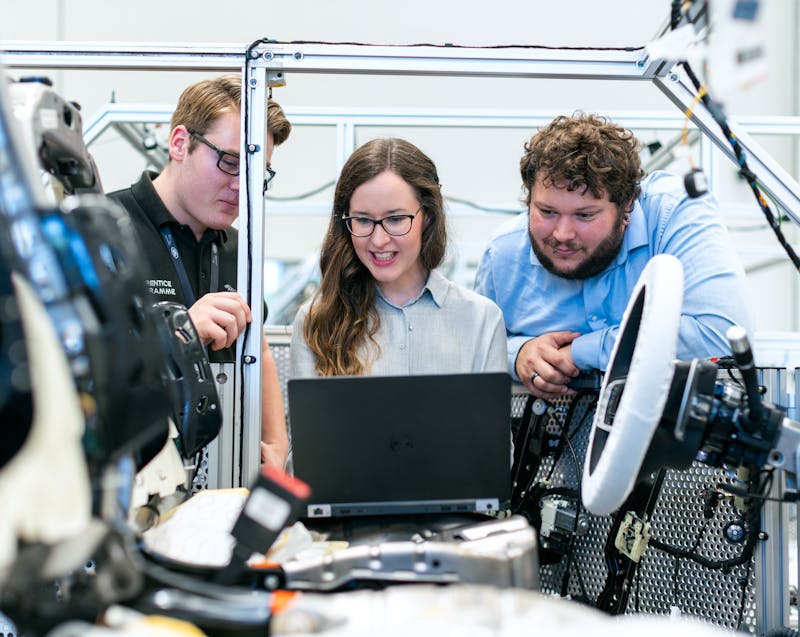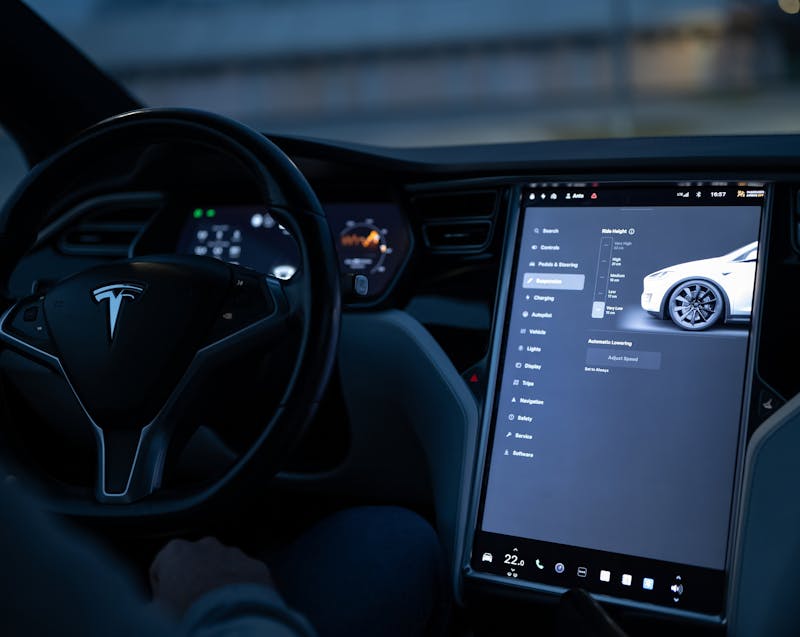For decades, the idea of cars driving themselves seemed like something pulled straight from science fiction. Today, with rapid advancements in artificial intelligence (AI), sensor technology, and machine learning, the future of autonomous vehicles feels closer than ever. Companies such as Tesla, Waymo, and traditional manufacturers like Toyota and Ford are investing billions into making self-driving cars a reality. But how close are we to fully autonomous vehicles hitting the roads in Australia and beyond, and what should we know before buying one?
For car enthusiasts, the discussion goes beyond convenience—it’s about technology, performance, safety, and what it means for the future of driving. This article takes a deep dive into the world of self-driving cars, exploring the current state of technology, the challenges that remain, and what we can realistically expect in the coming years.
What Exactly Is an Autonomous Vehicle?
When most people think of a “self-driving car,” they picture a vehicle capable of handling every aspect of driving without any human input. While that vision represents the highest level of automation, the reality is more nuanced. The Society of Automotive Engineers (SAE) outlines six distinct stages of vehicle automation, starting from Level 0, where the driver has complete control, up to Level 5, where the car operates entirely on its own under all conditions.
- Level 0: No automation; the driver has full control.
- Level 1: Driver assistance features, such as cruise control or lane-keeping assistance.
- Level 2: Partial automation where the car can control speed and steering simultaneously, but drivers must stay engaged.
- Level 3: Conditional automation; the car can handle certain driving tasks but may require driver input in complex scenarios.
- Level 4: High automation; cars can drive themselves under most conditions but may still need human input in extreme cases.
- Level 5: Full automation; vehicles are entirely self-driving with no need for human intervention.
Understanding these levels helps put into perspective where the industry stands and how far it needs to go. Currently, most vehicles on the market operate around Level 2, with some experimental programs edging closer to Level 3 and Level 4.
Why Are Automakers Investing Heavily in Self-Driving Cars?

Autonomous vehicle technology is not just a futuristic novelty. It represents a transformative shift in mobility that promises multiple benefits:
- Safety Improvements: Human error is responsible for around 90% of road accidents. Autonomous systems aim to reduce this significantly.
- Traffic Efficiency: Self-driving cars could communicate with each other and the road infrastructure, reducing congestion.
- Accessibility: Elderly individuals and people with disabilities could gain more independence through autonomous transport.
- Environmental Benefits: When paired with electric vehicle technology, autonomy could reduce carbon emissions through optimised driving patterns.
- Cost Savings: Companies see potential in reducing freight costs and maximising fleet efficiency through driverless trucks and taxis.
For car enthusiasts, these developments raise exciting questions about performance, car culture, and whether driving as a passion might one day take a back seat to automation.
The Current State of Autonomous Vehicle Technology
The automotive industry has made impressive strides in autonomy, but the road to full self-driving remains challenging. Today’s vehicles come equipped with advanced driver assistance systems (ADAS), such as adaptive cruise control, automatic emergency braking, and lane departure warnings.
Companies like Tesla have pioneered semi-autonomous features with their “Autopilot” and “Full Self-Driving” (FSD) software. While impressive, these systems still require constant driver supervision. Waymo, on the other hand, has launched fully autonomous taxi services in certain U.S. cities, operating without human drivers in limited geofenced areas.
However, scaling these technologies worldwide is far more complicated. Differences in infrastructure, road design, weather conditions, and local laws make global adoption uneven. In Australia, for instance, autonomous trials have been conducted in cities like Sydney and Perth, but regulations and infrastructure development remain works in progress.
How Do Self-Driving Cars Actually Work?
Behind the sleek exterior of an autonomous car lies a complex system of advanced technologies working in harmony. These include:
- Sensors: Lidar, radar, cameras, and ultrasonic sensors detect surrounding objects, lane markings, and obstacles.
- AI and Machine Learning: Algorithms process sensor data in real-time to make driving decisions.
- Mapping Systems: High-definition maps allow autonomous vehicles to understand road layouts with centimetre-level accuracy.
- Connectivity: Vehicles communicate with infrastructure (smart traffic lights, road sensors) and other cars to predict traffic flows.
- Control Systems: AI then translates decisions into physical actions, such as braking, steering, and acceleration.
It’s the integration of these components that allows an autonomous car to “see” the environment, anticipate scenarios, and navigate roads safely.
The Big Question: How Close Are We to Self-Driving Cars?
Despite the progress, achieving full autonomy is more difficult than many expected. Some experts once predicted we would have Level 5 vehicles by the early 2020s, but the reality has proven more complex.
Key Barriers to Full Autonomy:
- Technical Challenges: Handling unpredictable human behaviour, extreme weather, and complex city environments remains a hurdle.
- Legal and Regulatory Issues: Governments must create frameworks to manage safety, liability, and insurance for autonomous cars.
- Public Trust: Many people remain sceptical about safety, especially after high-profile crashes involving semi-autonomous vehicles.
- Cost of Technology: Lidar systems and advanced AI chips are expensive, making widespread affordability a concern.
- Infrastructure Gaps: Not all roads are equipped for vehicle-to-infrastructure communication, especially in rural areas.
While companies like Tesla, Waymo, and Baidu are inching closer to Level 4, achieving true Level 5 automation—cars that drive themselves anywhere, anytime—may still be a decade or more away.
What Does the Future Hold for Car Enthusiasts?
For those passionate about driving, the rise of autonomous vehicles may feel like a threat to the joy of being behind the wheel. However, there’s reason to believe car culture will evolve rather than disappear.
- Driving as a Hobby: Just as horses transitioned from everyday transport to leisure and sport, driving could become a recreational activity rather than a necessity.
- Performance Vehicles: High-performance brands may continue to offer manual driving options for enthusiasts, even as mass-market cars go autonomous.
- Track Days and Clubs: Car enthusiasts could shift more towards track driving, motorsports, and collectors’ events.
- Dual Modes: Some manufacturers may design cars with both manual and autonomous modes, giving drivers the option to switch depending on the situation.
The automotive passion won’t vanish—it will simply adapt to the new landscape of mobility.
Autonomous Vehicles and Road Safety
One of the strongest arguments for autonomy is safety. In Australia alone, thousands of lives are lost on the roads each year due to accidents, with the majority caused by human error, such as speeding, fatigue, or distraction.
Autonomous vehicles have the potential to:
- Maintain consistent speed and braking distances.
- Remove human distractions like texting while driving.
- React faster than human drivers in emergencies.
- Reduce drunk driving incidents.
However, critics point out that while autonomous cars can reduce accidents, they cannot eliminate them entirely. Software glitches, cyberattacks, or unexpected road hazards may still create risks. The key lies in balancing technological benefits with rigorous safety standards.
Will Self-Driving Cars Replace Public Transport?
Another important question is whether autonomous vehicles will compete with or complement public transport.
- Replacement Scenario: In theory, fleets of autonomous taxis could replace traditional buses and trains in low-density areas.
- Complementary Scenario: Autonomous shuttles could connect commuters to train stations or airports, improving accessibility.
- Environmental Concerns: If people shift away from public transport towards private autonomous cars, congestion and emissions may increase rather than decrease.
For cities like Sydney and Melbourne, autonomous vehicles are more likely to support rather than replace existing transport systems, filling gaps in first-mile and last-mile connectivity.
Self-Driving Cars and the Australian Road Network
Australia presents a unique challenge for autonomous vehicles. While urban areas have relatively modern infrastructure, rural and remote regions often lack consistent road markings and connectivity.
Government initiatives, such as the National Transport Commission’s guidelines on automated vehicles, are laying the groundwork for future adoption. Trials in Perth with driverless buses and Sydney with autonomous shuttles show promising results, but widespread rollout will require more investment in road infrastructure, digital mapping, and legislative reform.
For car enthusiasts in Australia, this means we may see autonomous vehicles first in controlled environments like shuttle routes, with private ownership of fully self-driving cars coming later.
The Role of Big Tech in Driving the Future

Automotive giants aren’t the only players in the race. Big tech companies like Google (through Waymo), Apple, and Baidu are major forces in shaping the future of autonomous vehicles.
- Waymo: Operating fully driverless taxi services in Phoenix and San Francisco.
- Apple: Secretive “Project Titan” hints at ambitions in autonomous vehicles.
- Baidu: Expanding autonomous taxi services across China.
- Amazon: Acquired Zoox, an autonomous ride-hailing company.
This tech-industry involvement suggests that the future of cars may be less about horsepower and more about software power.
Ethical Questions Around Self-Driving Cars
Autonomous vehicles raise ethical dilemmas that regulators and manufacturers must address. Consider the “trolley problem” scenario: if an accident is unavoidable, should the car protect its passengers or minimise harm overall?
Other ethical concerns include:
- Job Losses: Millions of professional drivers could be displaced by autonomous trucks and taxis.
- Privacy: Self-driving cars collect massive amounts of data, raising surveillance concerns.
- Liability: If an autonomous car causes a crash, is the manufacturer, software developer, or owner responsible?
These questions add another layer of complexity to the rollout of autonomous vehicles worldwide.
Will Autonomous Cars Be Affordable?
Like most new technologies, self-driving cars will likely be expensive at first. Lidar sensors, AI processors, and redundancy systems add significant costs. However, as mass production scales and technology improves, costs should decrease.
Potential affordability pathways include:
- Shared Mobility: Autonomous ride-hailing fleets may provide affordable alternatives to ownership.
- Government Incentives: Subsidies, similar to those offered for electric vehicles, could make them more accessible.
- Trickle-Down Effect: As technology matures, features will gradually appear in mid-range vehicles, just as airbags and ABS brakes once did.
Conclusion: A Roadmap to the Future
So, how close are we to self-driving cars? The answer lies somewhere between optimism and caution. Level 2 and Level 3 systems are already here, and Level 4 is within sight in controlled environments. However, full Level 5 autonomy—cars that handle any situation, anywhere, without human input—remains at least a decade away.
For car enthusiasts, this is both a challenge and an opportunity. While the nature of driving may change, the passion for cars will endure, reshaping itself around technology, performance, and culture. Autonomous vehicles are not the end of car enthusiasm—they’re the next chapter in its long, exciting story.
